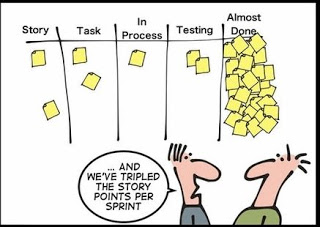Scrum and LeSS have a stringent discussion concerning Definition of Done.
The key question is
Considering our current context and capability, what activities can be completed in each sprint?
This subset is the initial Definition of Done.
A Definition of Done is weak when it is a small subset and strong when it almost equals Potentially Shippable.
In huge organizations, the development teams discuss their context and select the subset of the activities that all teams think they realistically can do during the sprint.
This is their initial Definition of Done.
The teams that can do more will expand this product Definition of Done within their members.
The difference between the Definition of Done and Potentially Shippable is referred to as Undone Work.
Potentially Shippable - Definition of Done = Undone Work
The Sprint is planned according to the Definition of Done and thus the Undone Work is excluded.
It is planned to be left undone.
The terms Potentially Shippable and Definition of Done are often not used consistently.
To clarify the terms:
|
Potentially Shippable
|
All activities that must be performed before the product can be shipped.
|
|
Definition of Done
|
An agreement between the teams and their Product Owner on which activities are performed inside the Sprint.
A Definition of Done is perfect when it equals Potentially Shippable.
Teams strive to improve towards an ideal Definition of Done.
|
|
Undone Work
|
The difference between the Definition of Done and Potentially Shippable.
When the Definition of Done is perfect, then there is no Undone Work.
If this is not the case, the organization has to decide.
First, how we deal with the Undone Work.
Second, how we improve so that there is less Undone Work in the future.
|
|
Unfinished, or not done—work
|
that was planned in a sprint but was not completed.
This is often confused with Undone Work.
|
|
Unfinished
|
is work that the team planned for but did not finish, whereas Undone Work was never even planned for?
When a team has work that was not finished, then they ought to feel anxious and discuss improvement actions during their retrospective.
|
Teams should never leave work-in-progress at the end of the sprint and carry over to the next one.
This causes a lack of transparency and reduces flexibility.
The product owner has more trouble to change the scope of the application.
If they forecast too much work, they need to remove completed items, which they have not started yet.
